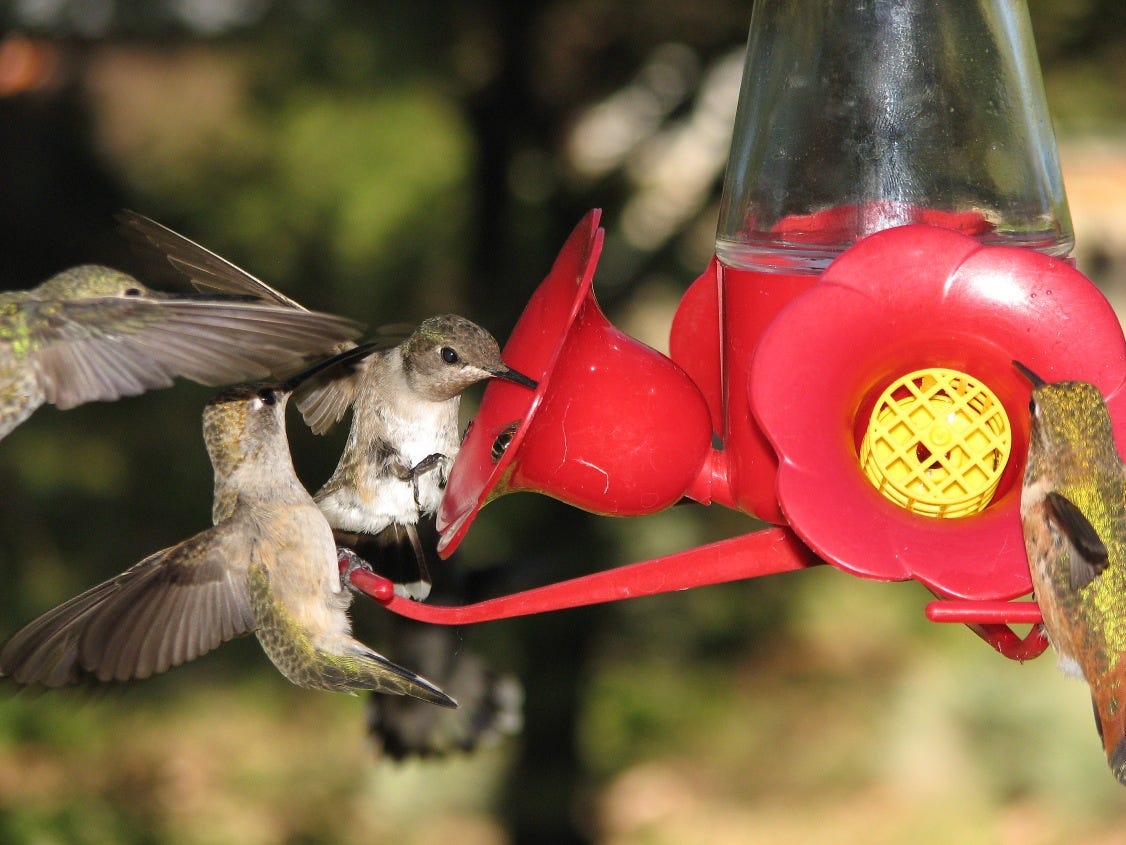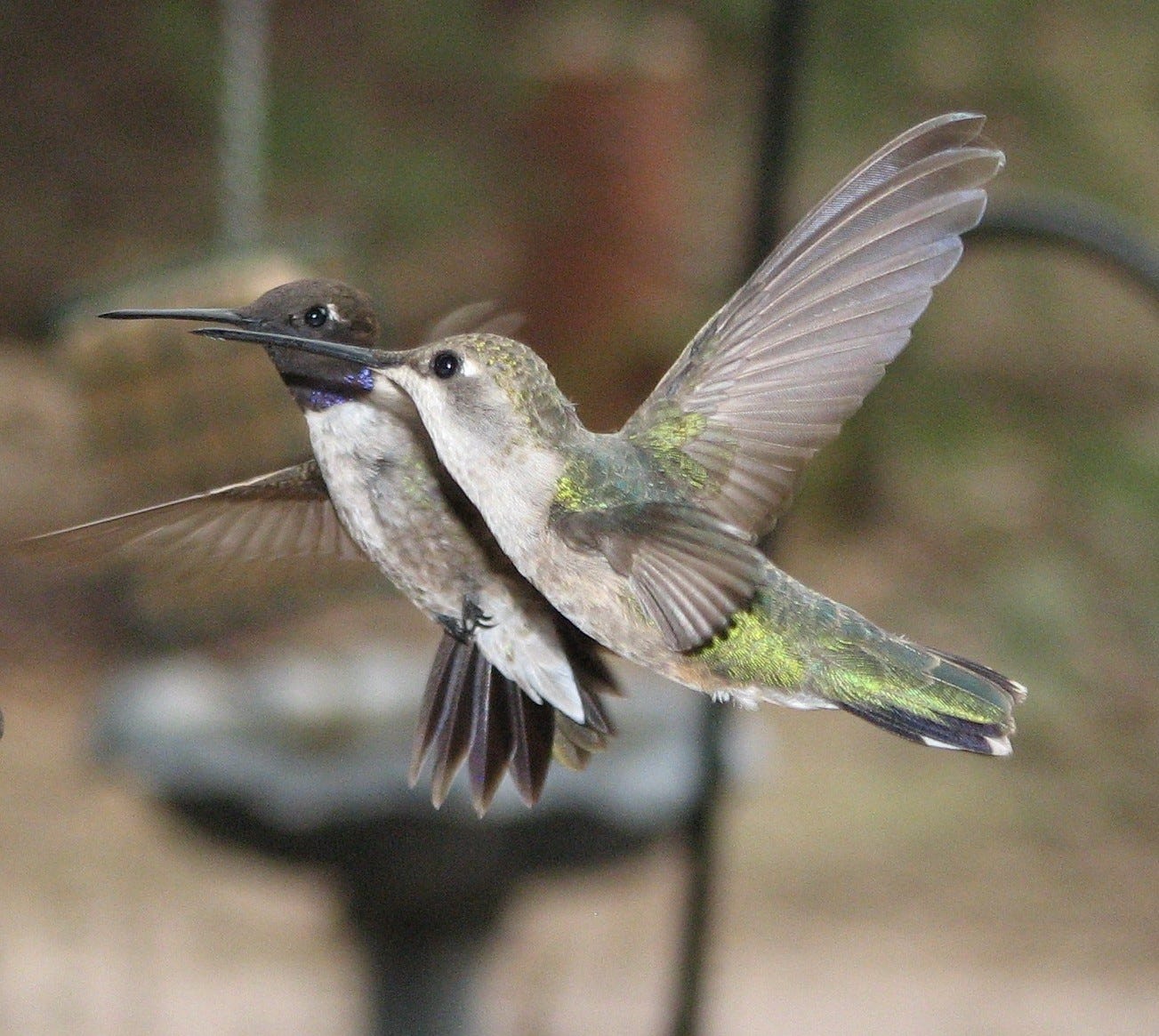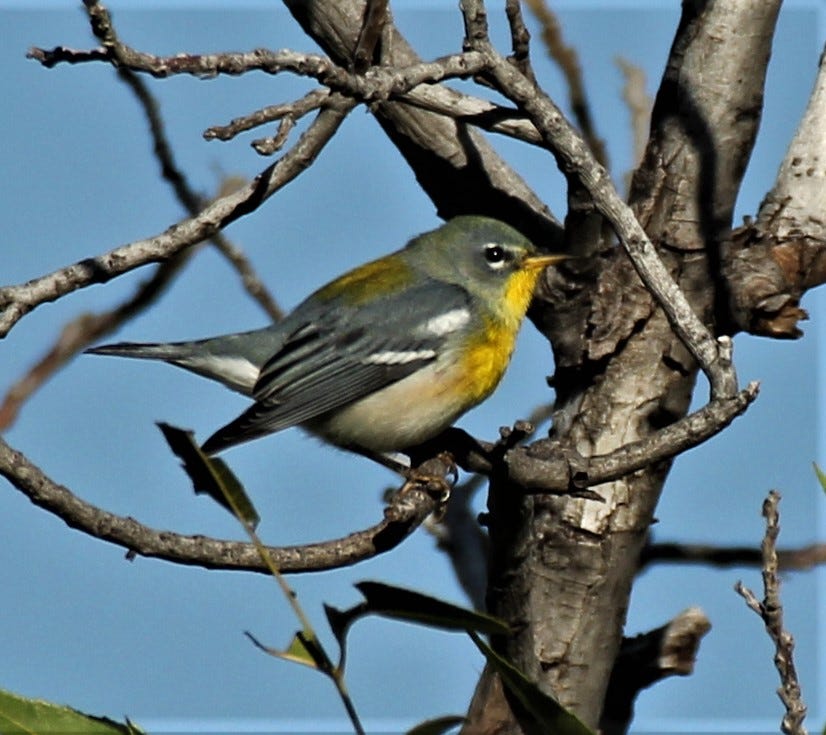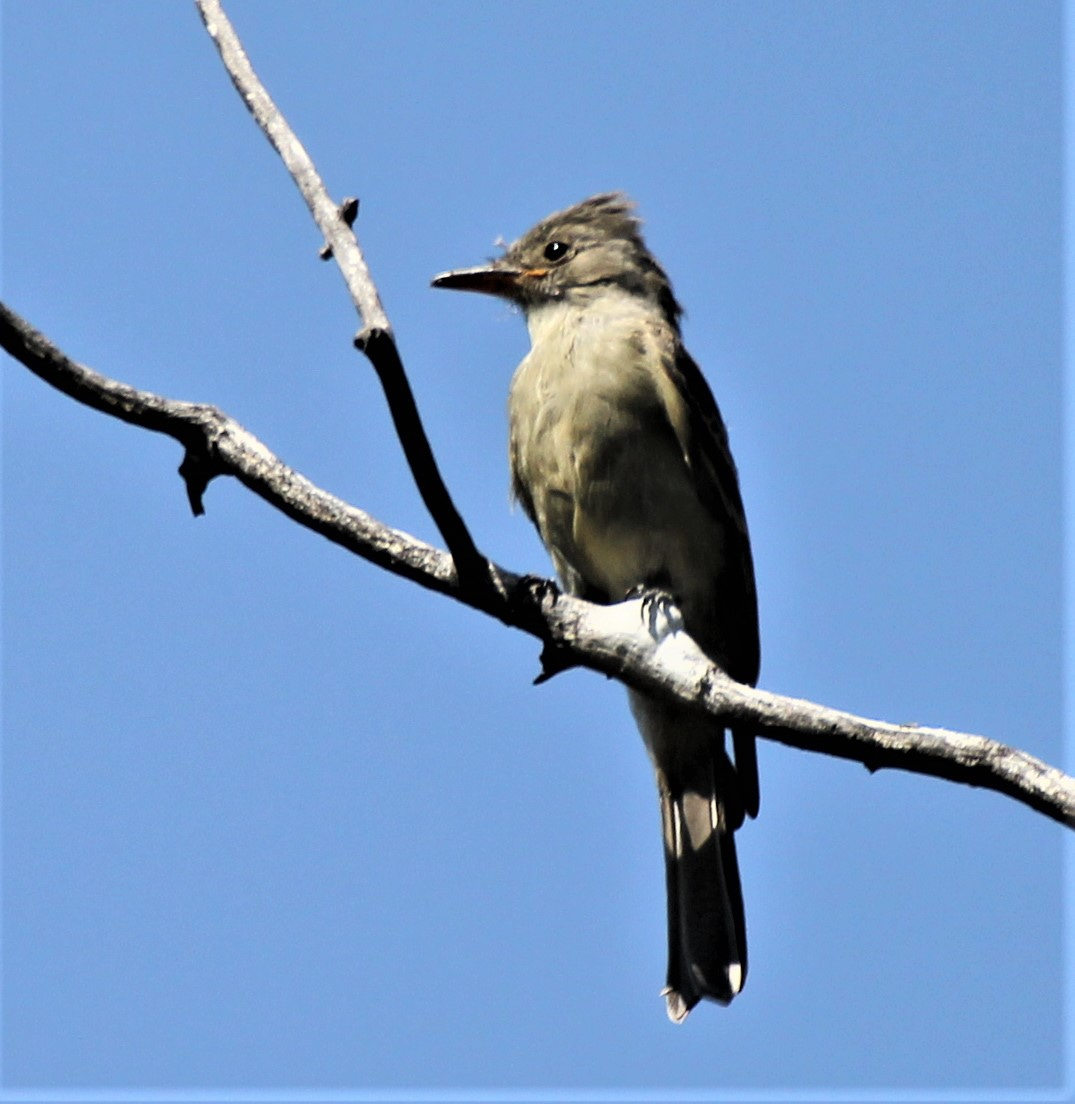The Big Yard: Birdwatching in a Time of Quarantine
Or: The Evolution of a Pajama Lister


Day 545 of the Pandemic (September 14, 2021)
Birdwatchers in southeast Arizona sound alarms about the lack of birds, both numbers and diversity. Hummingbird numbers at the feeders are down (although today I counted 24 black-chinned among the Anna’s, rufous, broad-tailed, and broad-billed). Warblers remain few. Most blame climate change, last year’s drought and this summer’s incinerated forests.
The evidence is anecdotal, but I wonder if something else isn’t at work. Climate change, certainly, is altering bird migration. A recent study in the journal Nature Climate Change suggests that rising global temperatures are driving birds north earlier each spring. But what I’m seeing in my yard could be more a function of weather than climate. The swing of a clock pendulum rather than the turn of the hour hand.
Last year, we suffered the worst monsoon in a decade. By the end of the year, less and 15 inches of rain fell in the Mule Mountains. I’ve measured more already this summer. Last September, dozens of warblers came to the fountain while I sat in my PJs. In one day, I might count ten species. This September no warblers come for water. A few hunt for insects in the trees—orange-crowns and Wilson’s and Nashville. But if I want to see warblers, I have to search for them, spending hours each morning hiking the canyon and scanning the oaks. They’re out there. In August I counted more Nashville warblers than I’ve ever seen here. Some days, I may get half a dozen species, along with 3 different vireos and a couple empid flycatchers.
The migrants are migrating. I just have to work harder for them. I have to wear pants.
So, are there fewer birds because of climate change? Or are birds dispersed across a landscape rich with greater numbers of flowers and butterflies than in a decade?
Purely anecdotal.

Today’s anecdote. While searching the trees for warblers, my eye catches movement in the black walnut. I see blue and yellow, not the expected hues for the expected warblers. I swing my camera to my face and snap off four quick photos before the bird flies off. When I blow up the display screen, I recognize a bird I’ve never seen here previously, one I only recently added to my life list while looking for the northern jacana in Tucson along the Santa Cruz River at Ina Road.
Northern parula!
The warbler, which must be on its way to wintering grounds in eastern Mexico, is “casual” in September, meaning records exist for it most years but not all (at least 3 but less than 9 reports in the last 10 years). eBird has no record for the warbler in the Mule Mountains.
Yesterday’s out-of-season western kingbird and today’s greater pewee, a bird I haven’t seen here since 2011, pale in comparison to the new yard bird.
Northern parula #164.


Thanks for subscribing! More to come!


September 2020: 83 yard species. September 2021: 72. Approximately the same number of days of observations. It appears that the drought brought more species to our yard. Nothing remarkable other than an unwelcome Eurasian Collared-Dove.
It's so cool to see what's "normal" and "not normal" there. I have seen few warblers even compared to avid birders in my area who really go and search them out. Yet Northern Parula's are one of our most common summer warblers (ok, if it were here now it would be extremely newsy). Every other bird you posted would be a real exception. I really love you're noticing the difference in yard birds when water is abundant vs when it's not too!